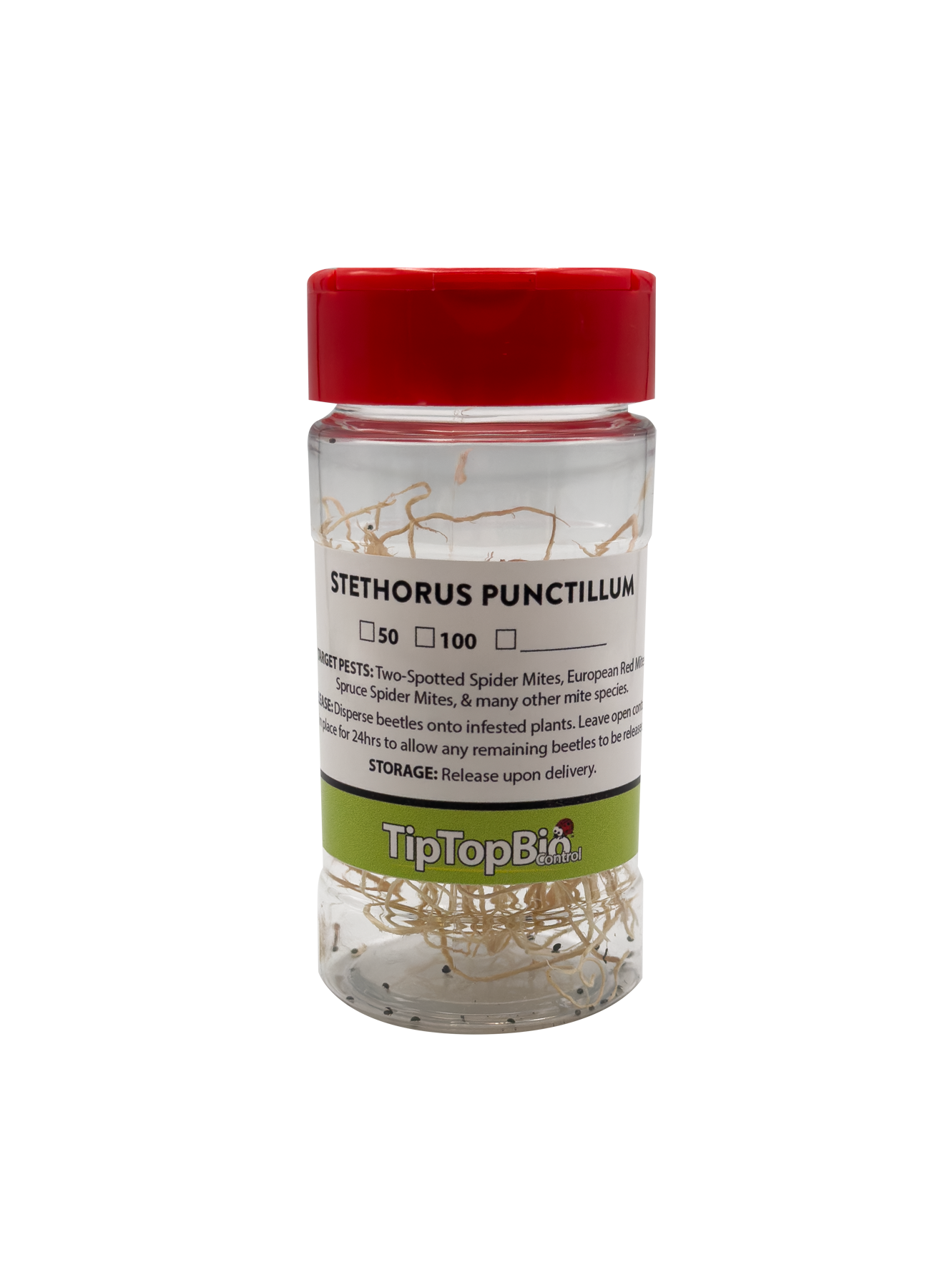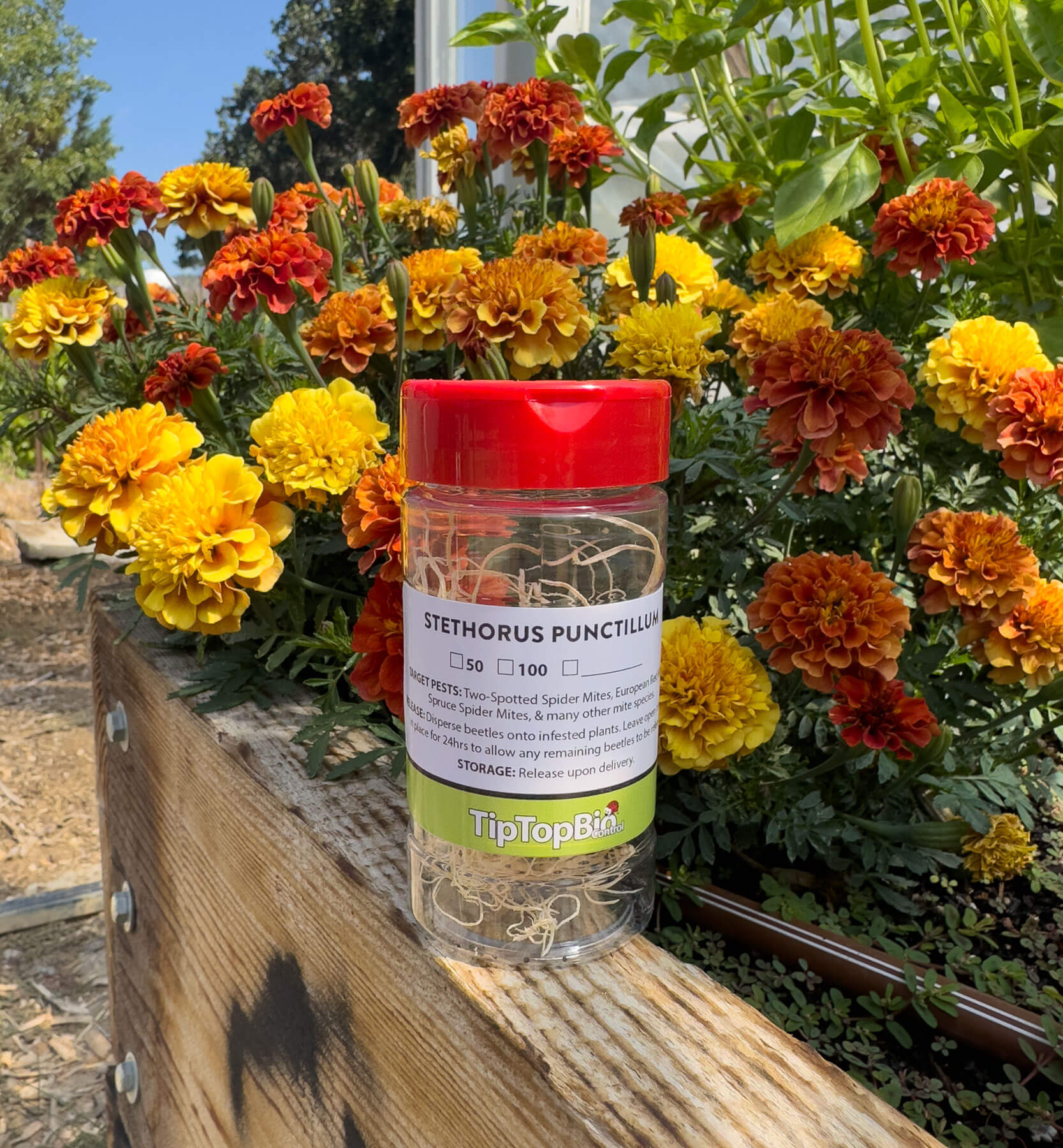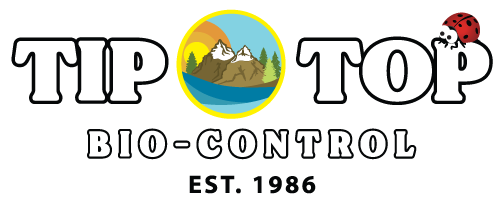


LIVE DELIVERY GUARANTEE
Two spotted spider mite predator that also feeds on aphids and other soft-bodied insects when spider mite populations are low.
TARGET PESTS
Two Spotted Spider Mite, European Red Mite, Spruce Spider Mite and Southern Red Mite..
DESCRIPTION
Scientific Name: Stethorus punctillum
STETHORUS is a member of the Coccinellid Beetle family, commonly known as ladybugs. These Spider Mite Destroyers are spider mite specialists but will supplement their diet with aphids and other small soft-bodied insects when spider mite populations are low. They are recognized by their distinctive round, dome shape, dark brown to black body about 1.5mm in size, fine hairs on its wing covers, and characteristic brownish-yellow markings on its mouth parts, legs, and antennae. Both the adults and larvae play a crucial role in targeting spider mites at all stages, especially two spotted spider mites.
Females lay small, oval-shaped eggs on the undersides of plant leaves, close to areas infested with spider mites. The eggs hatch within 2-3 days into elongated, alligator-like larvae that actively feed on immature spider mites. The larval stage is a critical period for predation on pest populations before entering the pupal stage for about 4-7 days. When fully formed adults emerge, they continue to feed on spider mites in all life stages, and other soft-bodied pests if necessary, for their 2-4 week lifespan.
TEMPERATURE
68-86°F
INTRODUCTION RATES
10 Beetles per infested plant, weekly, 3-4 times.
100 beetles per "hot spot."
It's important to note that these release rates serve as general guidelines and may vary based on the specific pest species, the crop or plant being treated, and level of infestation. Proper monitoring of the infestation and the subsequent effectiveness of the released beneficial insect population is crucial for determining the success of the biological control strategy.
STORAGE
For best results introduce immediately. Store at 45-55°F for no longer than 24hrs.
PRO TIPS:
Proper identification of the pest species is important. Monitoring the crop closely and introducing beneficial insects early will help in control pest populations.
Pesticides, even wetting agents, and spreader-stickers may adversely affect beneficial insects' survival. Broad spectrum and systemic insecticides are toxic.
The pesticide, fenbutatin oxide (Vendex ), can be used with Stethorus for additional control of spider mites if “hot spots” develop. It does not harm Stethorus, but avoid over-spraying, which reduces the predators’ food supply and their ability to reproduce.
ITEM NUMBERS
STETHORUS-50: 500 beetles per bottle.
STETHORUS-100: 100 beetles per bottle.
Choose options



